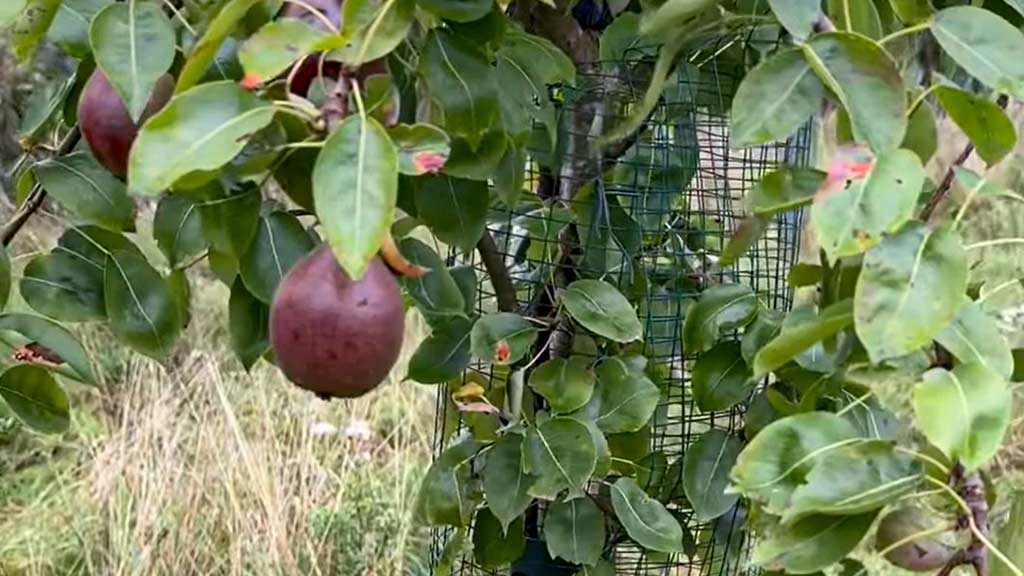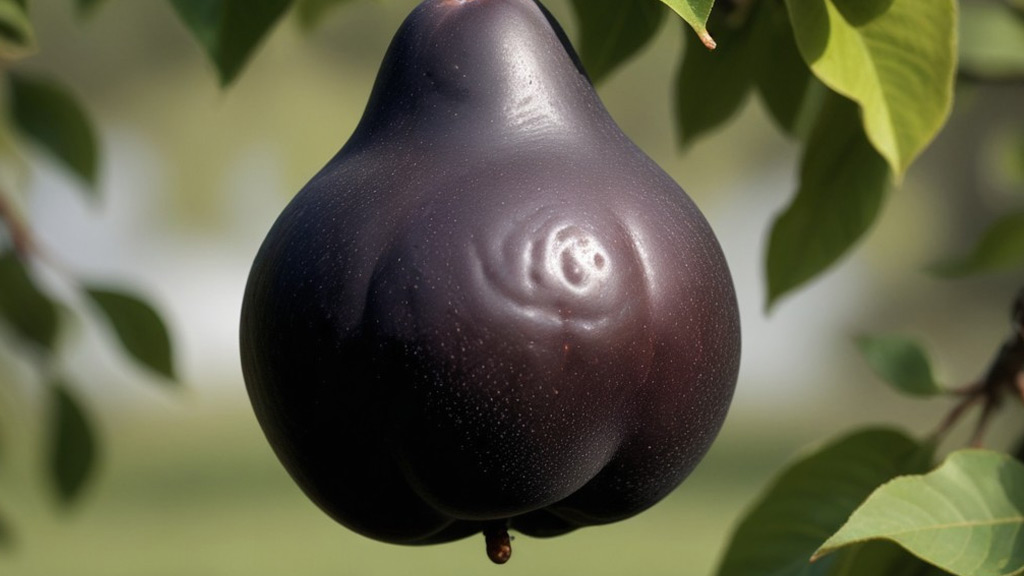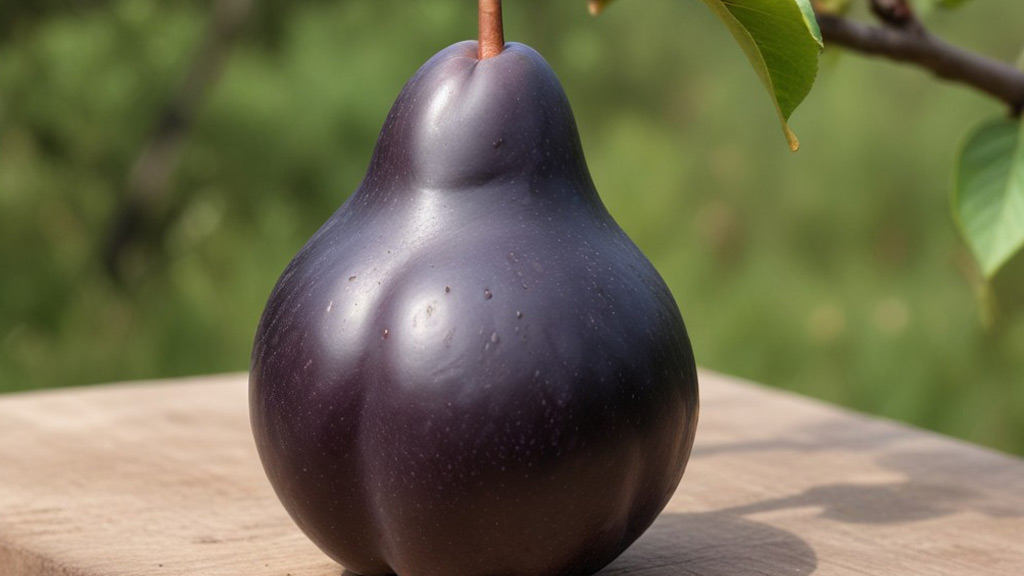The Black Worcester pear is one of England’s oldest and most historically significant pear varieties.
Dating back to the 13th century, this ancient fruit has been cultivated for centuries, particularly in the region of Worcestershire.
Known for its distinctive dark skin and firm texture, the Black Worcester pear has been prized for its versatility in cooking and long storage life.
Celebrated in horticultural literature and showcased in major exhibitions, this pear has played a crucial role in English agriculture.
Despite its decline in popularity with the advent of newer varieties, efforts to preserve this heritage fruit ensure its continued appreciation and cultivation in modern times.
Worcester Black Pear History Timeline
The Black Worcester pear, also known as ‘Parkinson’s Warden’ or simply ‘Worcester Black’, is an ancient and distinctive variety of pear with a rich history that traces back several centuries in England.
Below is a detailed timeline of Black Worcester Pear history:
Early History and Origins
The origins of the Black Worcester pear are believed to date back to the 13th century, making it one of the oldest known pear varieties in England.
Monks likely introduced this pear to the British Isles, where it thrived in the gardens of monasteries.
These early cultivations were crucial in establishing the pear’s presence in the region, as monasteries were central to agricultural innovation and preservation of plant species.
The pear’s ability to grow well in the English climate and its suitability for various culinary uses ensured its widespread adoption and cultivation.
16th Century
By the early 16th century, the Black Worcester pear was already well-established, noted for its robust nature and versatility.
It was particularly prized for use as a cooking pear and for making perry (pear cider). In 1597, John Gerard, a prominent botanist, included the Black Worcester pear in his “Herball or General Historie of Plantes,” where he praised its qualities.
Gerard’s documentation provided valuable information on the pear’s characteristics and its cultivation, solidifying its reputation among horticulturists and cooks alike.
17th Century

In 1629, the pear was further documented by John Parkinson in his seminal work, “Paradisus Terrestris.” Parkinson praised the fruit for its hardiness and quality, which helped promote its cultivation.
During the mid-1600s, the Black Worcester pear was favored for its excellent storage qualities, often being stored through the winter months for later consumption.
This made it an essential fruit for ensuring a reliable food supply during the colder months, when fresh produce was scarce.
18th Century
Throughout the 18th century, the Black Worcester pear continued to be cultivated widely across England, particularly around Worcestershire, from which it derives its name.
It became a staple in local orchards and markets, valued for its reliable yield and versatility in the kitchen.
In 1780, the Horticultural Society of London (later the Royal Horticultural Society) recognized the Black Worcester pear for its culinary virtues and began promoting its cultivation.
This endorsement helped to cement the pear’s status as a cherished variety among gardeners and cooks.
19th Century
In the early 1800s, the rise of commercial orcharding and agricultural advancements saw the Black Worcester pear being planted more extensively.
Its resilience to diseases and pests made it a favorite among farmers looking for reliable crops.
The Great Exhibition in London in 1851 showcased the Black Worcester pear among other notable fruit varieties, bringing it to wider public attention.
This period also saw the pear being celebrated in various horticultural publications and exhibitions, highlighting its significance in English agriculture.
20th Century

Throughout the 20th century, the Black Worcester pear experienced a decline in popularity as newer, more commercially viable varieties became available.
Despite this, it retained a loyal following among traditionalists and heritage fruit enthusiasts who valued its historical and culinary importance.
Efforts to preserve heritage fruit varieties gained momentum in the 1980s, leading to a resurgence of interest in the Black Worcester pear.
Organizations like the National Fruit Collection in the UK played a key role in conserving its genetic lineage, ensuring that this ancient variety was not lost to history.
21st Century
In the 21st century, the Black Worcester pear has become a part of various conservation and heritage orchard projects aimed at maintaining biodiversity and preserving traditional fruit varieties.
Today, the pear is celebrated for its historical significance and unique characteristics. It is grown in select orchards and gardens, with enthusiasts promoting its culinary uses and historical value.
Events and festivals often feature the Black Worcester pear, showcasing its versatility in recipes ranging from traditional dishes to modern culinary creations.
Notable Characteristics
The Black Worcester pear is easily recognizable by its distinctive dark, almost black skin when fully ripe, which is unusual among pears.
Known for its firm texture and astringent taste when raw, it is often used in cooking or left to ripen fully to develop a sweeter flavor.
Its firmness makes it ideal for baking, as it holds its shape well, and it is commonly used in preserves and chutneys.
Traditionally, it was also used in making perry, contributing to the variety of uses that made it a staple in English households.
How Was the Black Worcester Pear Historically Used?
The Black Worcester pear, also known as ‘Parkinson’s Warden’ or simply ‘Worcester Black’, has a rich history of varied uses, reflecting its versatility and the ingenuity of those who cultivated it over the centuries.
This ancient pear variety was highly valued for its unique characteristics and robustness, making it a staple in English households, kitchens, and markets.
Here are the historical uses of the Black Worcester Pear:
Culinary Uses

One of the primary historical uses of the Black Worcester pear was in cooking. Unlike many other pear varieties, the Black Worcester pear is known for its firm texture and astringent taste when raw, which made it less suitable for fresh eating but excellent for cooking.
Its firmness meant that it held its shape well during cooking, making it ideal for baking. Traditional recipes often included baked pears, where the fruit’s texture and flavor could be enhanced with spices and sweeteners.
The pear was also frequently used in making preserves, chutneys, and jams. Its robust flavor provided a good base for these preserved foods, which could be stored and enjoyed long after the fresh fruit season had ended.
This ability to be preserved made the Black Worcester pear an important fruit for ensuring a steady supply of food throughout the year, especially during the winter months when fresh produce was scarce.
Beverage Production
The Black Worcester pear played a significant role in the production of perry, a type of cider made from pears.
Historically, perry was a popular beverage in England, particularly in regions where pears were more abundant than apples.
The Black Worcester pear, with its strong flavor and good sugar content, was well-suited for fermentation into this traditional drink.
Perry production was an important aspect of rural economies and social life, with perry often being consumed during communal gatherings and celebrations.
Medicinal Uses
In addition to its culinary applications, the Black Worcester pear was also used for its purported medicinal properties.
During the medieval and early modern periods, many fruits and plants were believed to have health benefits.
The Black Worcester pear, like other wardens (a type of hard pear), was often recommended for digestive health.
Its firm texture and fibrous nature were thought to aid digestion and provide a gentle remedy for digestive ailments.
Storage and Winter Supply
One of the most significant historical uses of the Black Worcester pear was as a storage pear. Due to its hardiness and ability to be stored for long periods, it was an invaluable resource for ensuring a steady food supply during the winter months.
These pears were often picked in the late autumn and stored in cool, dry conditions where they could gradually ripen.
This made them a crucial part of the diet in a time before modern refrigeration and global food supply chains.
Symbolic and Cultural Importance
The Black Worcester pear also held a place of symbolic and cultural importance. Its association with Worcestershire and its presence in historical documents and horticultural literature made it a celebrated fruit in English history.
It was often featured in gardens of the gentry and was a subject of interest for botanists and horticulturists.
Its endurance through the centuries, despite the rise of newer varieties, speaks to its cultural significance and the high regard in which it was held.
FAQs
How old is the Black Worcester pear variety?
The Black Worcester pear dates back to the 13th century, making it one of the oldest known pear varieties in England.
Where did the Black Worcester pear originate?
The Black Worcester pear originated in England, particularly thriving in the Worcestershire region, where it has been cultivated for centuries.
What makes the Black Worcester pear unique?
The Black Worcester pear is known for its distinctive dark, almost black skin when ripe, and its firm texture. It is versatile in cooking and can be stored for long periods.
What efforts have been made to preserve the Black Worcester pear?
In the 20th and 21st centuries, various conservation and heritage orchard projects, including the National Fruit Collection in the UK, have worked to preserve and promote the cultivation of the Black Worcester pear.
Wrap Up
The Black Worcester pear, with origins dating back to the 13th century, stands as a testament to England’s rich horticultural heritage.
Celebrated for its robustness and versatility, it was historically used in cooking, perry production, and as a storage fruit.
Its firm texture and distinctive flavor made it a staple in kitchens and a valued commodity in markets.
Despite the rise of newer varieties, the Black Worcester pear’s enduring presence highlights its cultural significance and the importance of preserving traditional fruit varieties for their historical, culinary, and biodiversity contributions.
Its legacy continues to be cherished and maintained today.
Jaclyn Lowe